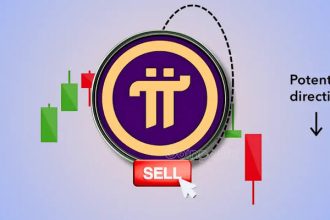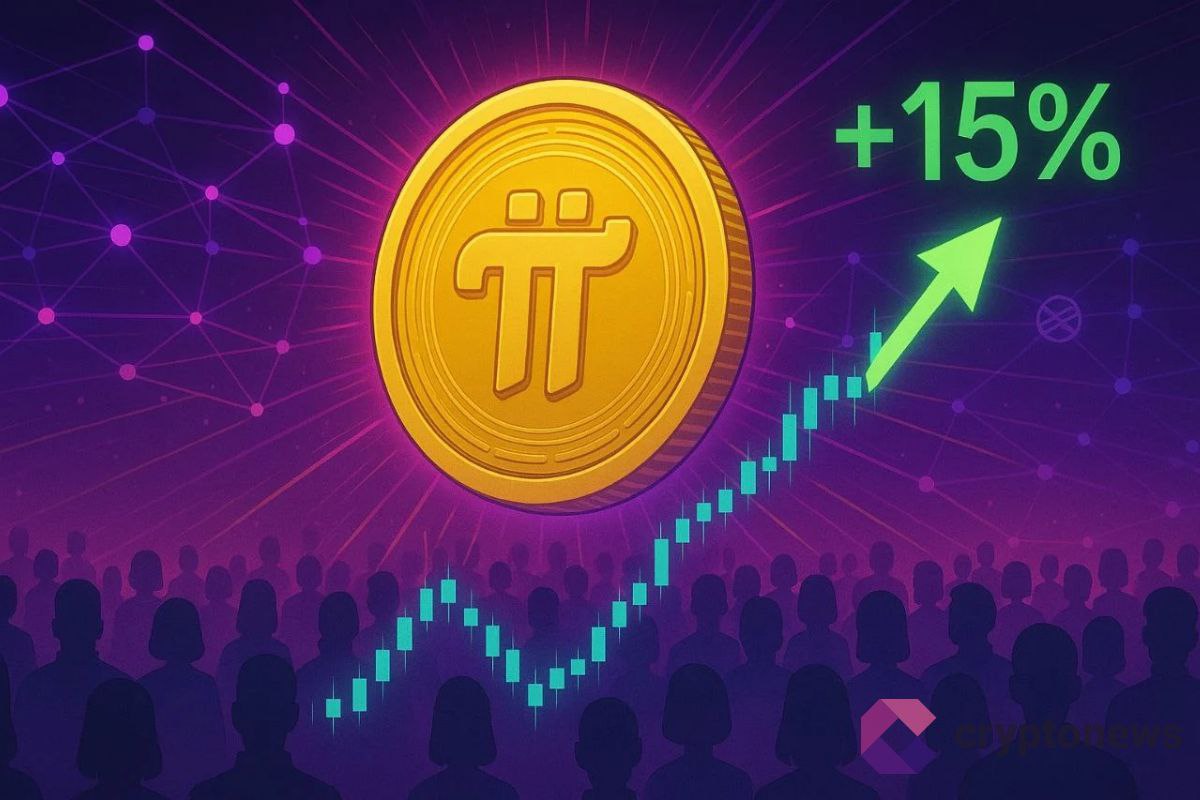The cryptocurrency market is never short of surprises. Over the past decade, digital assets have captivated global attention with their volatility, community-driven growth, and ability to disrupt traditional financial systems. Within this dynamic environment, Pi Network (PI) has steadily grown into one of the most talked-about blockchain projects, especially due to its unique model that allowed millions of users to mine tokens directly from their smartphones.
In recent weeks, however, Pi Network has captured headlines for a different reason: an anonymous whale has reportedly accumulated more than $136 million worth of PI tokens. This substantial and consistent buying spree has kept traders and analysts buzzing, sparking speculation that the project may be on the cusp of a major breakout.
At the same time, technical indicators such as a narrowing Bollinger Band squeeze and the development of a falling wedge pattern are reinforcing bullish sentiment. Added to this is the fact that the Altcoin Season Index is showing an upward trend, which often signals that investors are rotating funds from Bitcoin into smaller altcoins, creating favorable conditions for tokens like PI.
This article takes a deep dive into the story behind the whale, the technical signals, the broader market backdrop, and what this accumulation might mean for Pi Network’s token in the weeks and months ahead.
Understanding Pi Network
Before examining the whale’s activity, it is important to understand what Pi Network represents. Launched in 2019 by a group of Stanford graduates, the project sought to make cryptocurrency more accessible to everyday people by enabling mining from smartphones without consuming significant battery power or computational resources.
This approach led to massive adoption, with reports suggesting that Pi Network attracted tens of millions of users globally. Its community-first growth model, coupled with gamified mining mechanics, differentiated it from traditional proof-of-work cryptocurrencies like Bitcoin, which require expensive hardware and electricity.
Despite this large community, Pi has remained somewhat controversial in the wider crypto ecosystem. Because it has not yet been listed on major centralized exchanges, critics argue that its real-world value remains uncertain. Supporters, however, claim that once exchange listings and broader integrations occur, Pi could become one of the most widely adopted cryptocurrencies in the world.
The Whale Behind $136 Million in PI Accumulation
The heart of the current speculation lies in the fact that an unidentified whale has been steadily buying PI, amassing more than $136 million worth of the token. While whales are not uncommon in cryptocurrency markets, large holders exist in Bitcoin, Ethereum, and countless altcoins, the consistency and size of this accumulation is unusual.
Why Whale Activity Matters
Whales play an outsized role in the crypto ecosystem for several reasons:
- Liquidity Impact: When a whale buys or sells large amounts of a token, it can significantly influence price movement, especially in markets with low liquidity.
- Market Psychology: Traders often interpret whale activity as a signal of insider knowledge or institutional confidence, leading to increased buying or selling pressure from retail investors.
- Supply Shock: By removing large volumes of tokens from circulation, whales can create artificial scarcity, which may drive prices upward if demand remains steady.
In the case of Pi, the whale’s steady accumulation suggests long-term conviction. Whether this is a contrarian bet on undervaluation, anticipation of a major exchange listing, or simply a belief in Pi’s fundamentals, it has certainly changed the way the market views PI’s short-term trajectory.
Technical Analysis: Signals of a Potential Breakout
Beyond whale accumulation, traders are closely watching the charts. Technical analysis has always been an important aspect of crypto trading, given the high volatility and speculative nature of digital assets. Currently, two main indicators are reinforcing bullish sentiment for Pi Network.
1. The Bollinger Band Squeeze
Bollinger Bands are a technical indicator that measures volatility. When the bands narrow around the price known as a squeeze, it signals that volatility has decreased and that a significant move is likely to occur soon.
- In Pi’s case, weeks of sideways trading have created a pronounced squeeze.
- Historically, such squeezes often precede sharp breakouts, though the direction (upward or downward) is not guaranteed.
2. The Falling Wedge Pattern
Another bullish signal noted by technical analysts is the formation of a falling wedge pattern. This pattern occurs when price action consolidates within downward-sloping trendlines that converge over time.
- Falling wedges often signal a potential bullish reversal, especially when they occur after an extended downtrend or sideways trading period.
- A breakout above the upper trendline typically suggests strong upside momentum.
- When combined with the Bollinger Band squeeze, the falling wedge strengthens the case for a potential breakout to the upside.
The Altcoin Season Index: A Favorable Market Backdrop
- No token trades in isolation. Broader market sentiment plays a crucial role in determining whether technical setups lead to sustained moves or fizzle out. One key metric often used to gauge this sentiment is the Altcoin Season Index (ASI).
- The ASI measures how many altcoins outperform Bitcoin over a given period. A rising index indicates that investors are shifting capital from Bitcoin into alternative cryptocurrencies.
- Recent readings show the Altcoin Season Index climbing steadily, suggesting a favorable environment for tokens like PI.
- Historically, when altcoin season is in play, smaller tokens often experience outsized rallies, as speculative capital flows into higher-risk assets.
Thus, the whale accumulation in Pi is occurring at a time when broader market conditions may support sharp upward moves.
Possible Explanations for the Whale’s Behavior
While the exact identity and motivation of the whale remain unknown, several plausible explanations exist:
1. Anticipation of Exchange Listings: The most popular theory is that the whale expects Pi to be listed on major exchanges soon, which would significantly increase liquidity and visibility. Exchange listings are often accompanied by sharp price rallies.
2. Long-Term Conviction: The whale may simply believe that Pi is fundamentally undervalued, given its large community and unique mining model.
3. Strategic Accumulation: It is possible the whale is attempting to corner a significant share of circulating supply, giving them outsized influence in the ecosystem.
4. Speculative Arbitrage: The whale might be preparing for future arbitrage opportunities if Pi’s price begins to vary significantly across platforms.
Each of these explanations carries different implications for the token’s future trajectory, but together they underscore the importance of closely watching Pi in the near term.
Historical Context: Whales in Other Cryptocurrencies
Pi Network is not the first project to see significant whale involvement. Looking back, whales have shaped the trajectories of several major cryptocurrencies:
- Bitcoin (BTC): In its early days, Bitcoin was accumulated heavily by a small number of entities. These early whales continue to hold massive influence over BTC’s liquidity.
- Dogecoin (DOGE): A handful of wallets once held the majority of Dogecoin’s circulating supply, leading to concerns about centralization.
- Shiba Inu (SHIB): Whales played a key role in Shiba Inu’s meteoric rise, with large wallet holders strategically fueling rallies during peak hype cycles.
In each case, whale behavior contributed to both volatility and growth, underscoring the outsized impact large players can have in relatively small or emerging markets.
The Bull Case for Pi Network
Supporters of Pi believe the current whale accumulation and technical setup could trigger a major rally. The bull case rests on several pillars:
1. Strong Community Base: Pi boasts one of the largest user bases among altcoins, with millions of participants worldwide.
2. Exchange Listings as a Catalyst: If listings materialize, liquidity will expand, enabling broader participation and price discovery.
3. Technical Breakout Potential: The combination of a Bollinger squeeze and falling wedge creates a textbook bullish scenario.
4. Broader Altcoin Momentum: With the Altcoin Season Index trending upward, speculative flows may lift Pi alongside other tokens.
The Bear Case: Risks to Consider
It is equally important to acknowledge the risks. Skeptics of Pi point to several potential issues:
1. Unproven Real-World Utility: Critics argue that Pi has yet to demonstrate widespread real-world use cases beyond its community.
2. Exchange Listing Uncertainty: While rumors abound, there is no official confirmation of listings on major exchanges. Without this catalyst, bullish sentiment could fade.
3. Whale Dump Risk: The same whale currently fueling optimism could eventually sell, triggering a sharp correction.
4. General Market Volatility: If Bitcoin dominance rises again, altcoins like Pi could underperform, regardless of technical setups.
Balancing the Outlook
When weighing the bull and bear cases, it becomes clear that Pi Network’s near-term future hinges on two key factors:
1. Whether the whale continues accumulating or begins to sell.
2. Whether exchange listings or other significant catalysts materialize.
Until then, Pi will likely remain range-bound, with traders closely watching support and resistance levels for signs of breakout or breakdown.
Conclusion
Pi Network stands at an intriguing crossroads. The token has been trading within a tight range for weeks, yet behind the scenes, an anonymous whale has quietly accumulated more than \$136 million worth of PI. This accumulation has become the central narrative keeping traders glued to Pi’s every move.
Coupled with a rising Altcoin Season Index and bullish technical indicators like the Bollinger Band squeeze and falling wedge, the market is increasingly primed for volatility. Whether that volatility resolves upward into a breakout rally or downward into disappointment remains to be seen.
For now, one thing is clear: the mystery whale’s relentless accumulation has thrust Pi Network back into the spotlight, ensuring that its next move will be closely watched by the entire cryptocurrency community.












